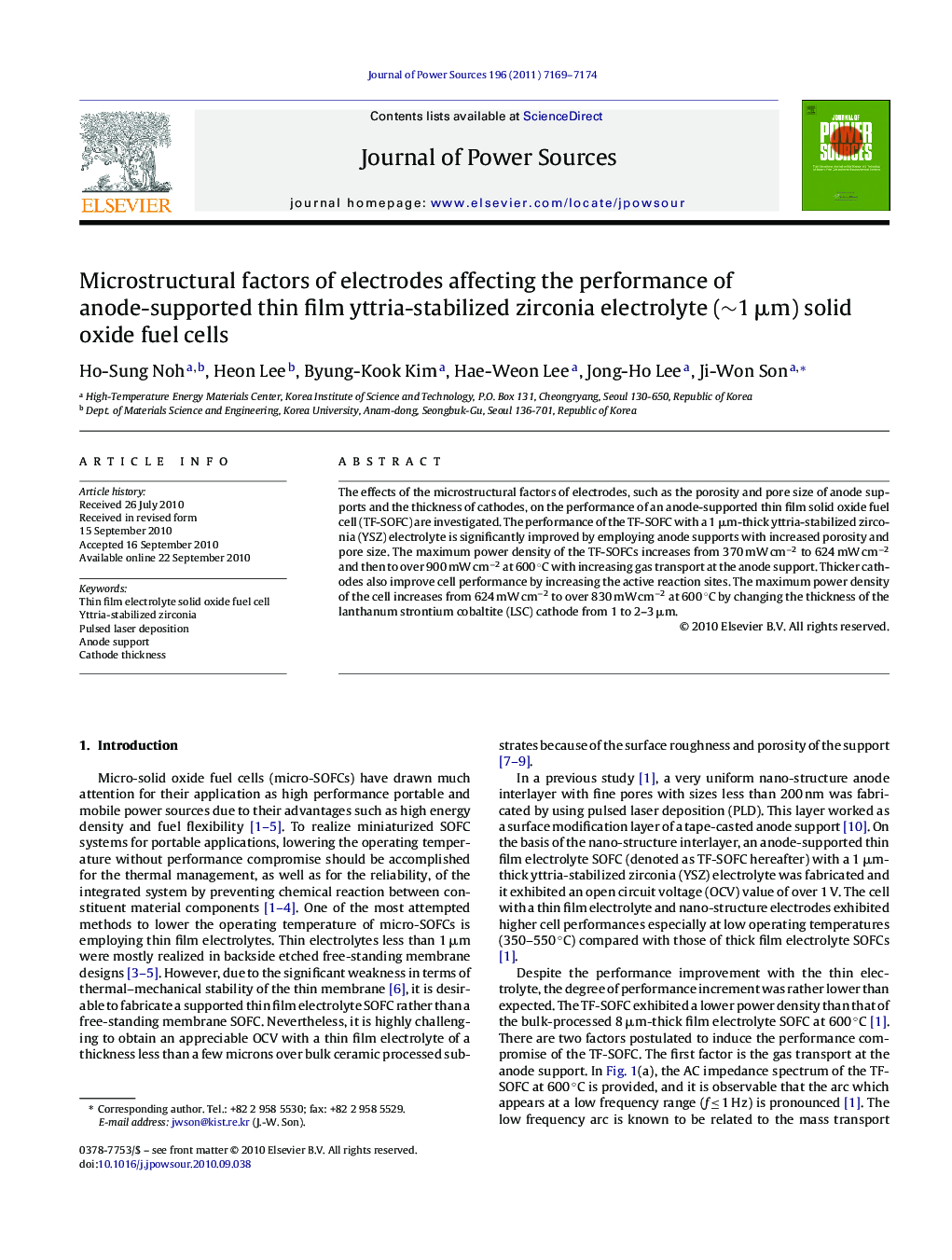| Article ID | Journal | Published Year | Pages | File Type |
|---|---|---|---|---|
| 1288498 | Journal of Power Sources | 2011 | 6 Pages |
The effects of the microstructural factors of electrodes, such as the porosity and pore size of anode supports and the thickness of cathodes, on the performance of an anode-supported thin film solid oxide fuel cell (TF-SOFC) are investigated. The performance of the TF-SOFC with a 1 μm-thick yttria-stabilized zirconia (YSZ) electrolyte is significantly improved by employing anode supports with increased porosity and pore size. The maximum power density of the TF-SOFCs increases from 370 mW cm−2 to 624 mW cm−2 and then to over 900 mW cm−2 at 600 °C with increasing gas transport at the anode support. Thicker cathodes also improve cell performance by increasing the active reaction sites. The maximum power density of the cell increases from 624 mW cm−2 to over 830 mW cm−2 at 600 °C by changing the thickness of the lanthanum strontium cobaltite (LSC) cathode from 1 to 2–3 μm.
